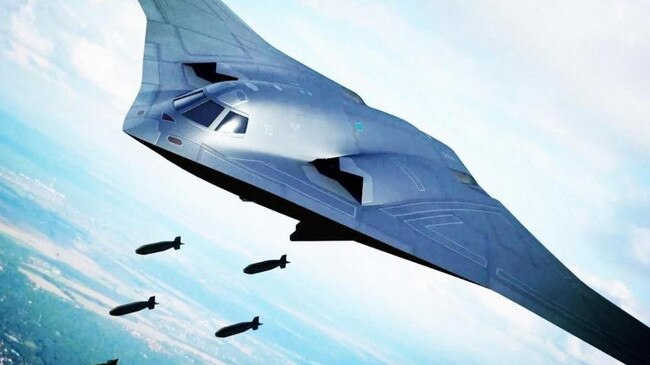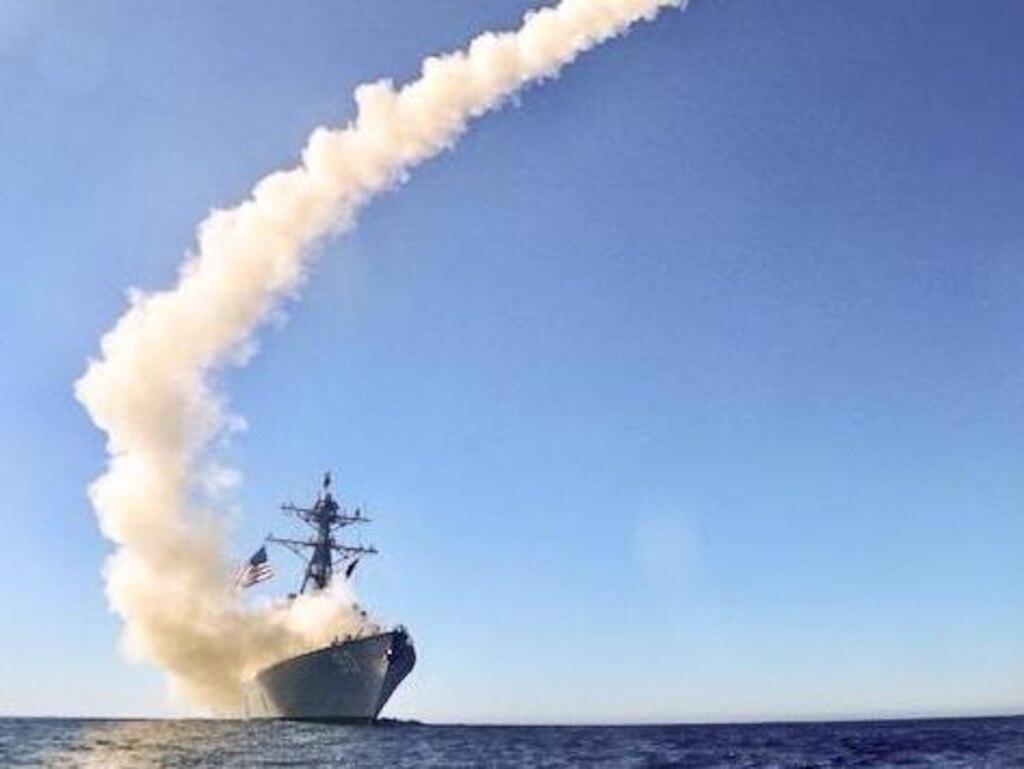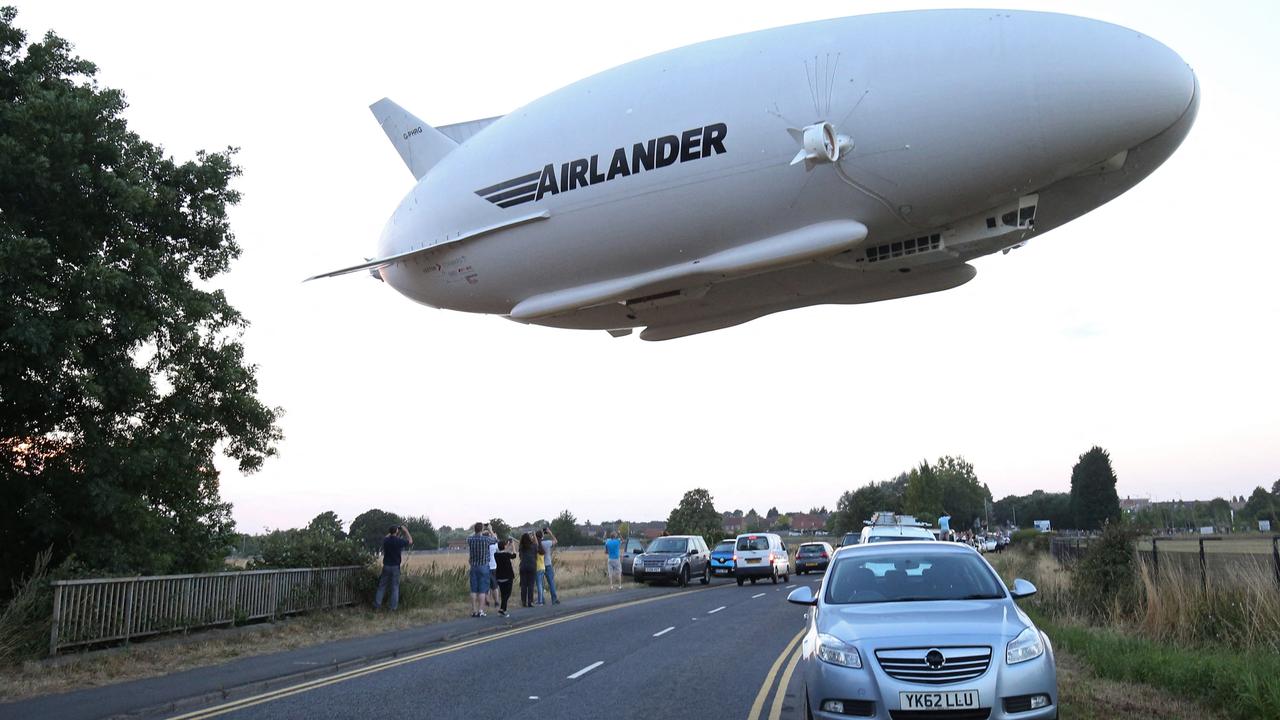China inches closer to ‘god of war’, a stealth bomber that can reach US islands
Beijing could be five years closer to letting slip its ‘god of war’, able to evade radar and fly 8000km without refuelling.

The first images have emerged of a Chinese stealth bomber that could evade radar to strike US territories.
The Xian H-20 bomber has not been officially confirmed by Beijing, but Modern Weaponry, a magazine run by China North Industries Group, a state-owned defence corporation, has published a computer-generated image of it on the cover of its June issue.
It showed a weapon bay, two adjustable tail wings, an airborne radar and stealth air intakes and engine nozzles on both sides. The plane is covered in a dark grey, radar-absorbent material. Its flying wing design appears strikingly similar to the Northrop Grumman B-2 Spirit bomber that has been a mainstay of America’s long-range nuclear threat since 1997.
The magazine called the new stealth bomber “the god of war in the sky” on the cover, but the accompanying story made no mention of the aircraft. It said only that the US had developed and equipped its air force with large, stealth strategic bombers.
The Chinese bomber would mark a significant milestone in Beijing’s efforts to compete with Washington, with stealth technology difficult to master and expensive to develop. Reports suggest that the H-20 will eventually replace the H-6, a 1950s-era design that China has steadily upgraded over the decades.
The new generation bomber is said to be able to fly 8000km without refuelling, allowing it to reach beyond the second Pacific island chain of Japan, Guam and the US Mariana Islands from bases in China’s mainland.
The US B-2 bomber, by contrast, has a range of about 7000km.
The island chain strategy, a US foreign policy, was initially intended to surround the former Soviet Union and China by sea. It has long fuelled Chinese fears of being encircled by the US military.
Although no details have been confirmed, the bomber is expected to be equipped with nuclear and conventional cruise missiles. It is not expected to be able to break the sound barrier.
Jon Grevatt, a warplane specialist and Asia-Pacific defence analyst at Janes, the defence and security intelligence source, told the South China Morning Post: “If the aircraft becomes operational, it has the potential to be a game-changer.”
He said that the released pictures showed the H-20 prioritised stealth and long distance over speed. “So that means the strategic kind of advantage of that aircraft is that it would be able to strike as what they call a strategic bomber, so it will be able to strike targets a long distance away, perhaps in the second island chain and beyond,” Grevatt added. “That means it would threaten US assets and interests in the Asia-Pacific.”
The Royal United Services Institute for Defence and Security Studies suggested that China’s stealth bomber could give the country a “truly intercontinental power-projection capability”.
The Chinese military is seeking to catch up with the US, and China’s ruling party sees having a force on a par with its American counterpart as necessary to deter Washington from threatening its grip on power. Beijing has been rapidly modernising its military hardware. The H-20 is believed to be the highlight of the country’s plan to upgrade its fleet of warplanes. China’s defence spending for this year will rise by 6.8 per cent on last year, broadly tracking the government’s modest growth forecast.
The Times






